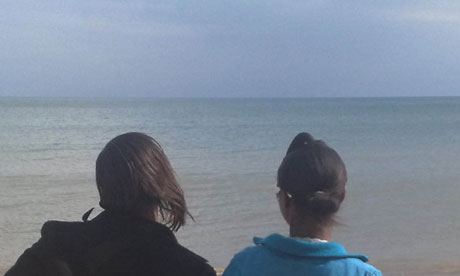 Authorities allege that prostitution of minors was occurring at this home on the 2100 block of NW 29 Street in Oakland Park. (Sun-Sentinel/Susan Stocker) |
The woman was a mother figure, while her partner acted as the pimp over four underage girls, a prosecutor told a federal judge about a couple charged with running a bordello called the Boom Boom Room.
Denied bail at a hearing Wednesday, James "Red" Mozie, 34, of Lauderhill, and his girlfriend, Laschell "Shelly" Harris, 37, of Oakland Park, will be jailed until their trial on charges of child sex trafficking.
If they are convicted, they could face a decade or up to life in prison. They were arrested on May 14 by members of the FBI-led Minor Vice Task Force.
U.S. Attorney Wifredo Ferrer has called child sex trafficking in South Florida a "significant problem" and "nothing short of tragic that we have so many of these cases." He said the Southern District of Florida has three ongoing cases in addition to Mozie and Harris.And Broward Sheriff Al Lamberti, whose department works with the task force, said they get "weekly" tips about child prostitution, especially for crime generated online.
"This whole phenomenon is being fueled by Internet sites like Craigslist and Backpage.com," Lamberti said. "We're not talking about sex between consenting adults. This is men paying for sex with children. And they need to rot in jail."
In court Wednesday, Mozie and Harris listened to their defense lawyers challenge evidence offered to U.S. Magistrate Judge Robin S. Rosenbaum by Assistant U.S. Attorney Corey Steinberg and FBI Special Agent Dereck Farinha.
Harris was in her pajamas when she was arrested at 1 a.m. at the house she rented at 2140 NW 29th St. in Oakland Park. She lived there with other children including two babies, according to court testimony.
The night of the raid, 12 male customers were in the house that was guarded by an armed doorman. Adult porn was being shown on a big-screen TV and marijuana and alcohol was being served, the criminal complaint states.
Steinberg said the victims considered Harris to be the house mother, who cooked for them and collected their tips for dancing nude or topless for customers.
"These are girls from broken homes who had a need to be loved," Steinberg said of the victims, ages 14 to 17, three of whom were runaways.
Steinberg alleged that all four girls said Mozie insisted they have sex with him.
She also said Mozie knew some of the girls were younger than 18, and that he collected money paid to them for sex at the brothel that was open from 10 p.m. until 4 or 5 a.m., Tuesdays through Saturdays.
Investigators found cards for a party business with Mozie and Harris's names and cellphone numbers on them. They also found text messages on Mozie's phone advertising flat rates for a drink and a girl for those who didn't want to pay a $5 cover charge, according to the prosecutor.
Harris' lawyer declined to comment after the hearing. Assistant Federal Public Defender Neison Marks, who represents Mozie, said, "There was no evidence, no fingerprints, no DNA, no video to support any of this."
The pair will be arraigned on child sex trafficking charges within the next two weeks, when their defense attorneys will likely offer pleas of not guilty on their behalf.
Adriane Reesey, who heads the Broward Human Trafficking Coalition, said she expects to see more such cases prosecuted.
"Given what we have seen thus far in arrests, and the reports that we understand are being generated, this may just be the tip of an ugly iceberg," she said. "We are just beginning to see the results of more reporting and tips followed up by law enforcement."
The FBI-led Minor Vice Task Force includes, in addition to the Broward Sheriff's Office, officers from Miami-Dade, Miami Beach, Miami and Fort Lauderdale police departments.
Those agencies and the U.S. Attorney and U.S. Secret Service in South Florida were honored on May 19 by Attorney General Eric Holder during the National Strategy Conference on Combating Child Exploitation in California.
The recognition was for indicting 25 defendants in more than 16 cases here and, in 2010, for winning guilty verdicts in five child sex-trafficking cases.
LTrischitta@Tribune.com or 954-356-4233




















